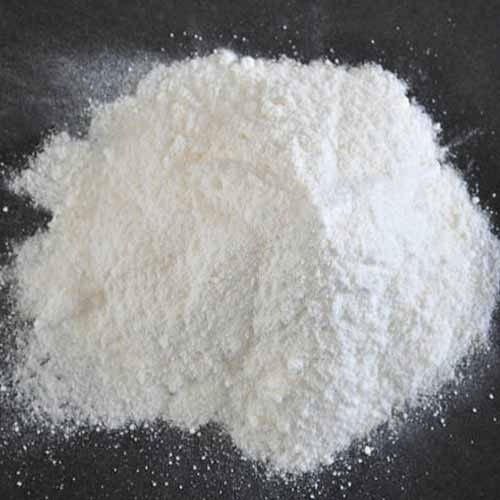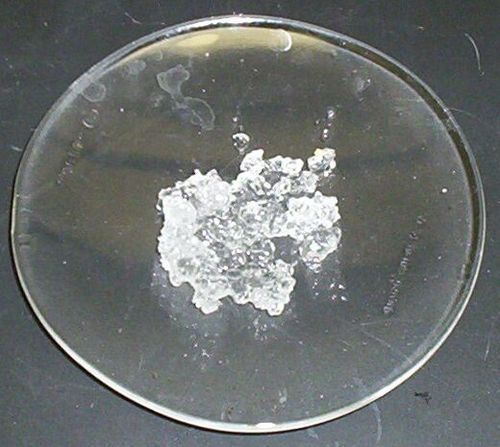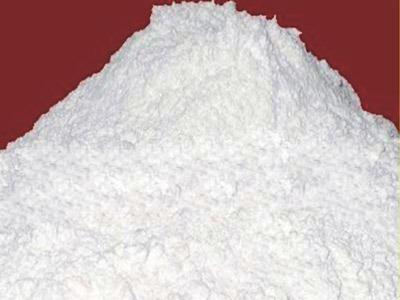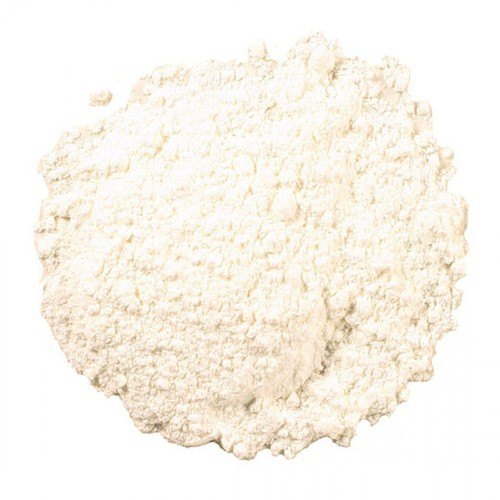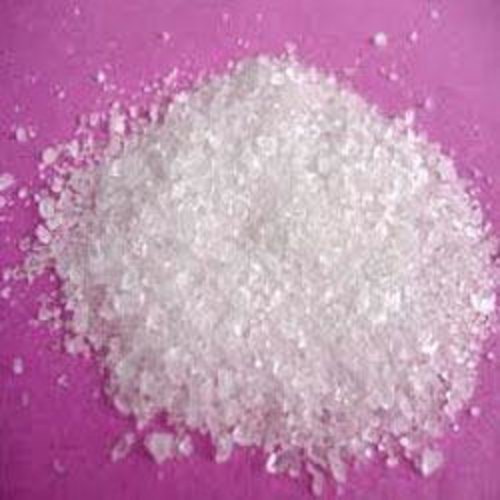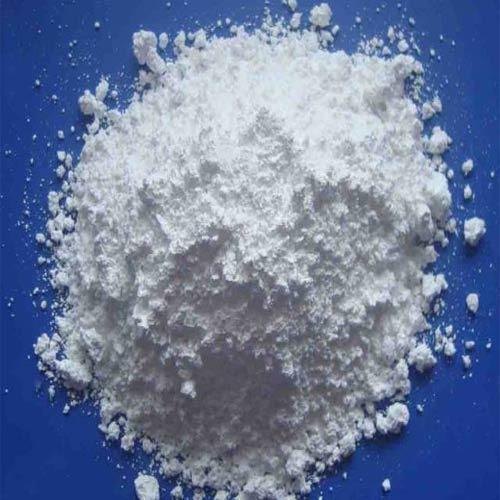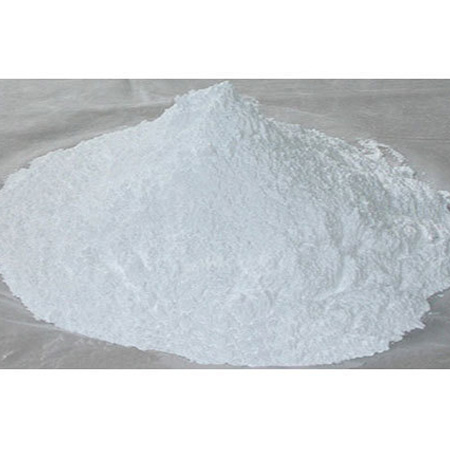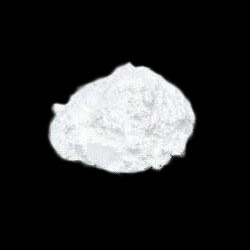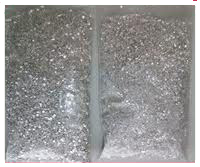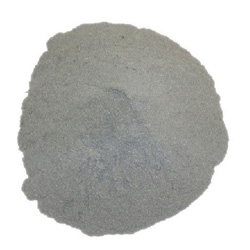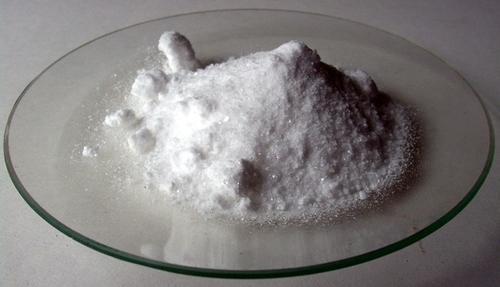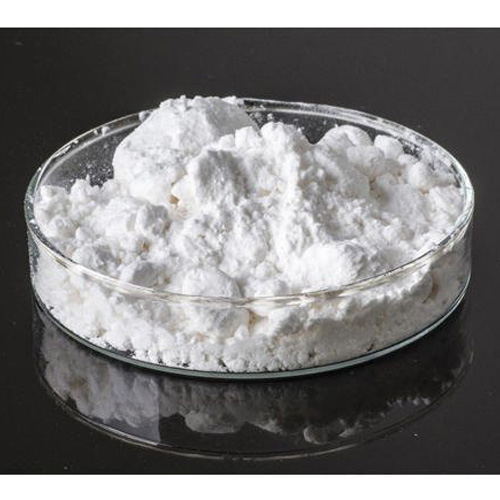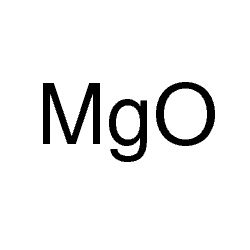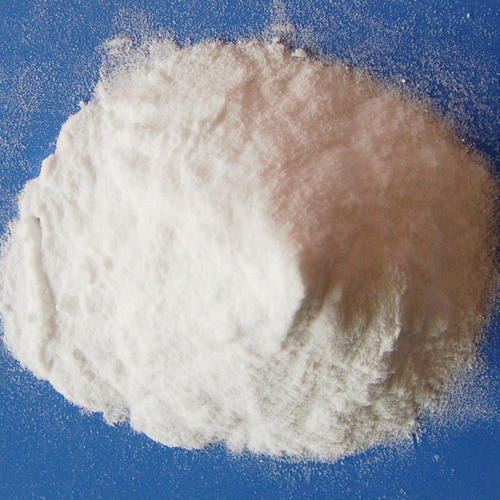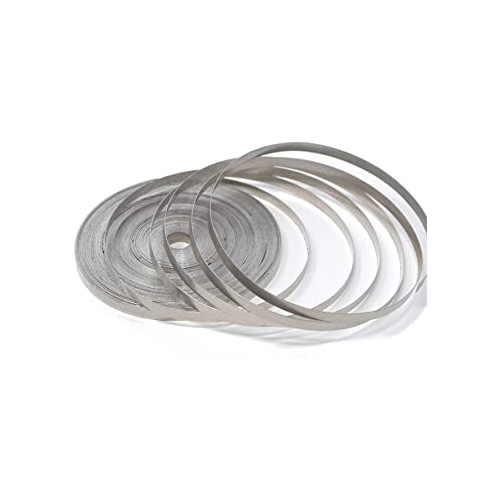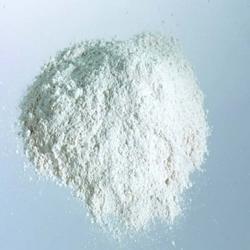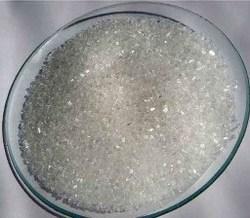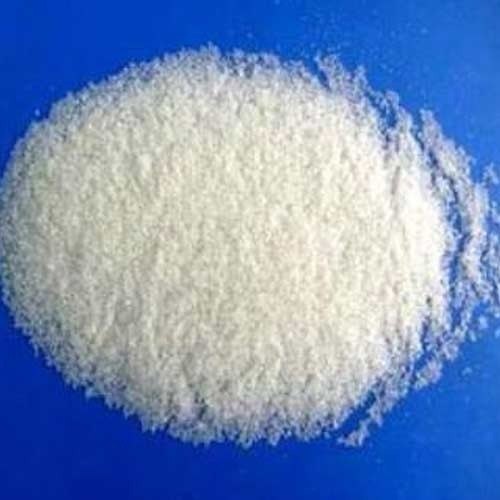Magnesium Compound
Leading Wholesale Trader of magnesium silicate, magnesium stearate, magnesium metal turning, magnesium metal ribbon, magnesium fluoride and magnesium hydroxide from Mumbai.
Magnesium Acetate
Anhydrous magnesium acetate has the chemical formula Mg(C2H3O2)2 and in its hydrated form, magnesium acetate tetrahydrate, it has the chemical formula Mg(CH3COO)2 • 4H2O. In this compound magnesium has an oxidation state of 2+. Magnesium acetate is the magnesium salt of acetic acid.It is deliquescent and upon heating, it decomposes to form magnesium oxide.Magnesium acetate is commonly used as a source of magnesium in biological reactions.
Magnesium Chloride
Magnesium chloride is the name for the chemical compounds with the formulas MgCl2 and its various hydrates MgCl2(H2O)x. These salts are typical ionic halides, being highly soluble in water. The hydrated magnesium chloride can be extracted from brine or sea water. In North America, magnesium chloride is produced primarily from Great Salt Lake brine. It is extracted in a similar process from the Dead Sea in the Jordan valley. Magnesium chloride, as the natural mineral bischofite, is also extracted (via solution mining) out of ancient seabeds; for example, the Zechstein seabed in northwest Europe. Some magnesium chloride is made from solar evaporation of seawater. Anhydrous magnesium chloride is the principal precursor to magnesium metal, which is produced on a large scale. Hydrated magnesium chloride is the form most readily available.
Magnesium Carbonate Light
Magnesium carbonate, MgCO3, is an inorganic salt that is a white solid. Several hydrated and basic forms of magnesium carbonate also exist as minerals.
Magnesium Citrate
Magnesium citrate (1:1) (1 magnesium atom per citrate molecule), called below by the common but ambiguous name magnesium citrate (which can also mean magnesium citrate (3:2)), is a magnesium preparation in salt form with citric acid. It is a chemical agent used medicinally as a saline laxative and to completely empty the bowel prior to a major surgery or colonoscopy. It is available without a prescription, both as a generic and under the brand names Citromag and Citroma. It is also used in the pill form as a magnesium dietary supplement. It contains 11.3% magnesium by weight. Compared to magnesium citrate (3:2), it is much more water soluble, less alkaline, and contains 29.9% less magnesium by weight.
Magnesium Fluoride
Magnesium fluoride is an inorganic compound with the formula MgF2. The compound is a white crystalline salt and is transparent over a wide range of wavelengths, with commercial uses in optics that are also used in space telescopes. It occurs naturally as the rare mineral sellaite.
Magnesium Hydroxide
Magnesium hydroxide is an inorganic compound with the chemical formula of hydrated Mg(OH)2. As a suspension in water, it is often called milk of magnesia because of its milk-like appearance. The solid mineral form of magnesium hydroxide is known as brucite
Magnesium Silicate
A wide quality array of products comprising Chemical Compound, Organic Compound, Boric Acid, Carnauba Wax, Crude Iodine, Ammonium Ferric Citrate, Gelatinous Substance, Inorganic Compound, Immersion Oil, Laboratory Chemicals,Magnesium Metal Turning, Wool Wax, Acenaphthene Chemical, Magnesium Metal Powder and Malt Sugar.
Magnesium Stearate
We are engaged in offering a comprehensive range of Magnesium Stearate that is a perfect composition of chemicals. Furthermore, our range of stearate is extensively used as diluents by our clients. This stearate is hugely in demand as this is widely used for formulating, medical tablets, capsules and various types of powders.
Magnesium Metal Turning
Our firm has been actively betrothed in providing to its clients with Magnesium Metal Turning.
Features:
- Accurate pH value
- Enhanced shelf life
- Precise composition
- High purity
- Hygienically processed
Exporter of Magnesium Metal Turning. Our product range also comprises of Laboratory Chemicals, Speciality Chemicals and Chemical Compound.
Magnesium metal has unique characteristics. It has the lowest density of all the metal elements, making it the lightest, but is also very strong and easily manipulated for machine tooling. Magnesium has similar characteristics to its sister metal, aluminum, but is 34% lighter than aluminum, and 70% lighter than steel, making it a solution of choice for lightweight requirements in the transportation industry.
Magnesium Metal Turning is used in Production of fine chemicals. It is used as a catalyst. It is also used in GRIGNARD Reaction.
- Purity: 99. 8%
- Chip size: 0. 2mmx1. 5mm
- Packing: Well Air Tight packed in Paper Fibre Drums, Each drum Containing 25 Kgs.
- Expiry Date: -The Material will work fine till 8 months if kept air tight. It will expire within 3 months if exposed to air.
Magnesium is 33% lighter than aluminum, 60% lighter than titanium, and 75% lighter than steel. Yet for many applications it’s stronger per unit volume than all three of those structural metals. It is also an extremely versatile metal. Besides its basic functions as a component in aluminum alloys, titanium, and steel production, magnesium can also be cast into various mechanical parts and replace aluminum alloys for virtually anything you want to make lighter and stronger.
Magnesium usage is not just limited to the automotive sector. It is also generating a lot of buzz in the sports sector. It has taken high performance to a whole new level. Not only is magnesium light-weight, durable, and stronger than aluminum, but it also absorbs 16 times more shock and vibrations, making it the ideal metal that gives competitive sports that extra edge. Many motorcycle and mountain bike manufacturers have incorporated magnesium in their premium designs for years while new innovations used in the sports sectors are generating additional attention. Skiers, snowboarders and even ice skaters now find some of their equipment made out of magnesium as it provides much better stability at higher speeds. It is also transforming the sport of golf, where drivers made with a magnesium crown are lighter with better weight distribution to allow golfers to deliver longer and more powerful drives.
Many magnesium advantages are used in world economic because they can’t be realized using other materials and comparable manufacturing processes. When the die casting process reaches such a high state of perfection, there is a tendency for some to think of future progress in terms of purification. Such thinking isn’t always true. There are many things that have to be done to realize all these suggestions and aims – bigger and better casting machines, improved finishing techniques, casting of metals that have not yet been practical and so on.
Magnesium Metal Powder
Facilitated with huge industrial expertise and understanding, we are providing Magnesium Metal Powder.
Features:
- Well packed
- Safe to use
- Effectiveness
- Reliable nature
- Hygienically processed
- Longer shelf life
Magnesium is an alkaline earth metal that has the symbol Mg in the periodic table of elements. Magnesium is a fairly strong, silvery-white, light-weight metal (one third lighter than aluminum) that slightly tarnishes when exposed to air. In a powder, this metal heats and ignites when exposed to moisture and burns with a white flame. It is difficult to ignite in bulk, though it is easy to light if it is shaved into thin strips. Once ignited, it is difficult to extinguish.
Magnesium is a brilliant white metal, which is relatively soft. It is one of the more abundant elements, there being 23000 ppm in the earth’s crust. As a powder, magnesium is extremely reactive, but as a solid it oxidises slowly in air and reacts slowly in water. It does not occur naturally, but is found in combination with other elements in minerals such as magnesite (MgCO3, primarily) and dolomite (the double carbonate of magnesium and calcium). As with other elements in groups 1 and 2 of the periodic table, it can be produced by electrolysis of the molten halide.
Magnesium is very chemically active, it takes the place of hydrogen in boiling water and a great number of metals can be produced by thermic reduction of its salts and oxidized forms with magnesium. It joins together with most non-metals and almost every acid. Magnesium reacts only slightly or not at all with most of the alkalis and many organic substances, like hydrocarbons, aldehides, alcohols, phenols, amines, esters and most of the oils. Used as a catalyst, magnesium promotes organic reactions of condensation, reduction, addition and dehalogenation. It was used for a long time for synthesizing special and complex organic components by the well-known Grignard reaction. The main ingredients of the alloys are: aluminum, manganese, zircon, zinc, rare-earth metals and thorium.
Magnesium compounds are used as refractory material in furnace linings for producing metals (iron and steel, nonferrous metals), glass, and cement.
With a density of only two thirds of the aluminum’s, it has countless applications in cases where weight reducing is important, i.e. in aeroplane and missile construction. It also has many useful chemical and metallurgic properties, which make it appropriate for many other non-structural applications.
Magnesium components are widely used in industry and agriculture.
Other uses include: removal of sulphur form iron and steel, photoengraved plates in the printing industry; reducing agent for the production of pure and other metals from their salts; flashlight photography, flares, and pyrotechnics.
Magnesium is the eighth most abundant element and constitutes about 2% af the Earth’s crust by weight, and it is the third most plentiful element dissolved in seawater. It’s very abundant in nature, and it’s found in important quantities in many rocky minerals, like dolomite, magnetite, olivine and serpentine. It’s also found in seawater, underground brines and salty layers. It’s the third most abundant structural metal in the earth’s crust, only exceeded by aluminum and iron.
Magnesium Nitrate
Magnesium nitrate is a hygroscopic salt with the formula Mg(NO3)2. In air, it quickly forms the hexahydrate with the formula Mg(NO3)2·6H2O (and molar weight of 256.41 g/mol). It is very soluble in both water and ethanol
Magnesium Oxide Heavy
Magnesium oxide (MgO), or magnesia, is a white hygroscopic solid mineral that occurs naturally as periclase and is a source of magnesium (see also oxide). It has an empirical formula of MgO and consists of a lattice of Mg2+ ions and O2− ions held together by ionic bonding. Magnesium hydroxide forms in the presence of water (MgO + H2O → Mg(OH)2), but it can be reversed by heating it to separate moisture
Magnesium Oxide Light 96%
| Specifications | |
|---|---|
| Appearance | White powder |
| Assay (as MgO) | 96 - 100.5% |
| Identification | Passes test |
| Loss on ignition (at 800°C) | Max 10% |
| Free alkali and soluble salts | Max 2% |
| Acid insoluble matter | Max 0.1% |
| Calcium (Ca) | Max 1.1% |
| Heavy metal (as Pb) | Max 0.002% |
| Iron (Fe) | Max 0.05% |
| Residual solvents | Meets the requirment |
Magnesium Oxide Heavy 98%
| Specifications | |
|---|---|
| Appearance | White powder |
| Assay (complexometric; on ignited basis) | 98 - 100.5% |
| Identification | Passes test |
| Colour of solution | Passes test |
| Substance insoluble in acetic acid | Max 0.1% |
| Substance soluble in water | Max 2% |
| Chloride (Cl) | Max 0.1% |
| Sulphate (SO4) | Max 1% |
| Heavy metal (as Pb) | Max 0.003% |
| Calcium (Ca) | Max 1.5% |
| Iron (Fe) | Max 0.07% |
| Arsenic (As) | Max 0.0004% |
| Loss on ignition (at 900°C) | Max 8% |
Magnesium Phosphate
Magnesium phosphate is a general term for salts of magnesium and phosphate appearing in three forms:
Monomagnesium phosphate (Mg(H2PO4)2)Dimagnesium phosphate (MgHPO4)Magnesium phosphate tribasic (Mg3(PO4)2)Various forms have been used as laxatives and antacids
Magnesium Ribbon 25gm Roll
(7439-95-4)
| Specifications | |
|---|---|
| Appearance | Silvery white ribbon |
| Assay | Min 99.5% |
| Substance insoluble in HCl | Max 0.05% |
| Lead (Pb) | Max 0.01% |
| Copper (Cu) | Max 0.005% |
| Iron (Fe) | Max 0.05% |
Magnesium Sulphate Dried
Magnesium sulfate (or magnesium sulphate) is an inorganic salt (chemical compound) containing magnesium, sulfur and oxygen, with the formula MgSO4. It is often encountered as the heptahydrate sulfate mineral epsomite (MgSO4·7H2O), commonly called Epsom salt, taking its name from a bitter saline spring in Epsom in Surrey, England, where the salt was produced from the springs that arise where the porous chalk of the North Downs meets non-porous London clay.
Magnesium Sulphate Heptahydrate
Magnesium sulfate (or magnesium sulphate) is an inorganic salt (chemical compound) containing magnesium, sulfur and oxygen, with the formula MgSO4. It is often encountered as the heptahydrate sulfate mineral epsomite (MgSO4·7H2O), commonly called Epsom salt, taking its name from a bitter saline spring in Epsom in Surrey, England, where the salt was produced from the springs that arise where the porous chalk of the North Downs meets non-porous London clay.
Magnesium Trisilicate
Magnesium trisilicate is an inorganic compound that is used as a food additive. The additive is often employed by fast food chains to absorb fatty acids and remove impurities that form in edible oils during the frying process
Chemical Products
- Aluminium Compound
- Ammonium Compound
- Antimony Compound
- Barium Compound
- Bismuth Compound
- Boric Acid
- Cadmium Compound
- Calcium Compound
- Cetramide
- Chemical Compound
- Chemical Element
- Copper Compound
- Cuprous Compound
- Ferric Compound
- Ferrous Compound
- Food Additives
- Gelatinous Substance
- Gum Powder
- Inorganic Compound
- Laboratory Chemicals
- Laboratory Equipment
- Lead Compound
- Lithium Compound
- Manganese Compound
- Magnesium Compound
- Magnesium Metal Turning
- Mercuric Compound
- Micrcoscopy Stains And Solutions
- Natural Oil
- Nickel Compound
- Organic Compound
- Potassium Compound
- Speciality Chemicals
- Silver Compound
- Sodium Part I
- Sodium Part II
- Sodium Part III
- Strontium Compound
- Zinc Compound

